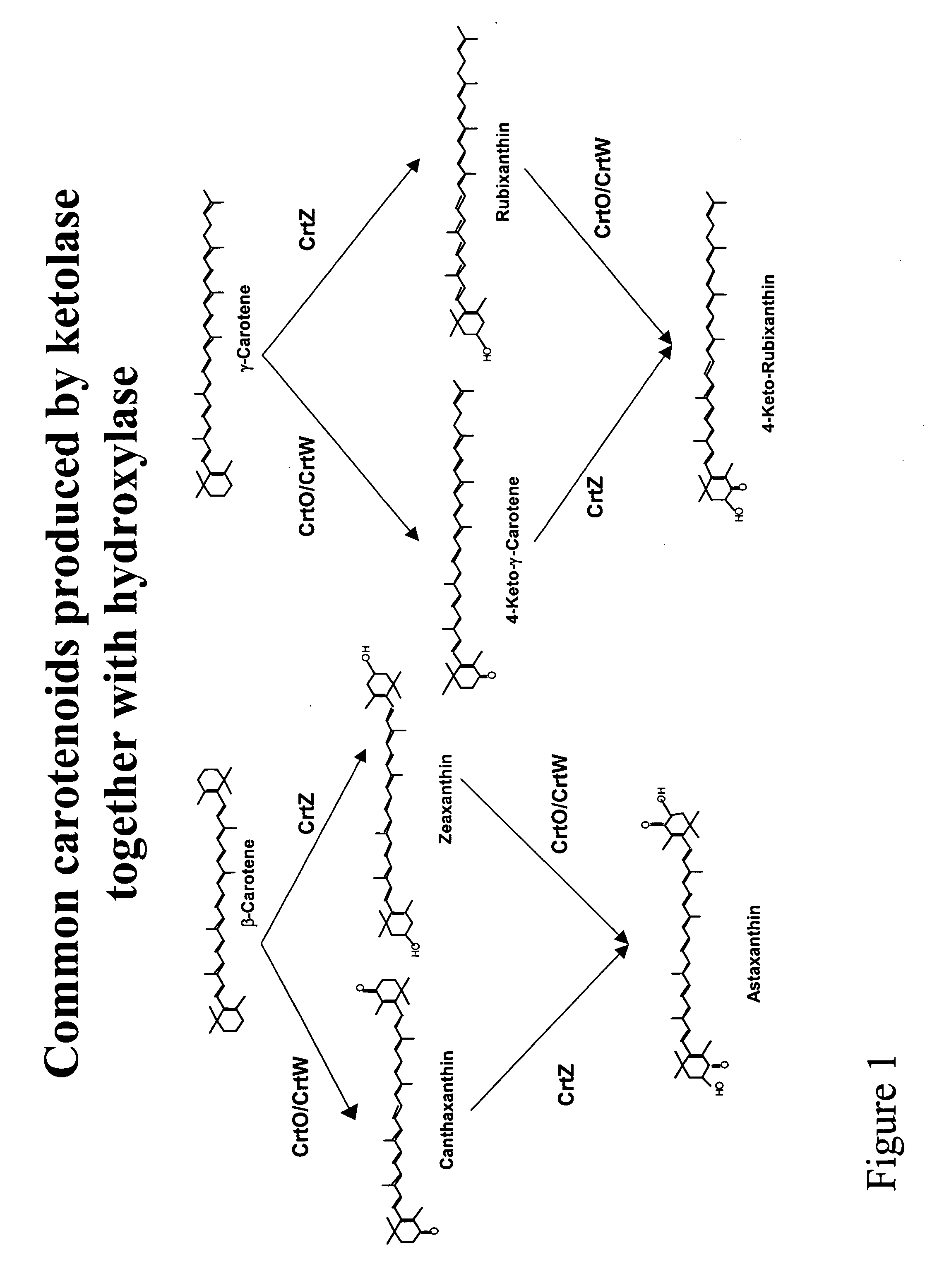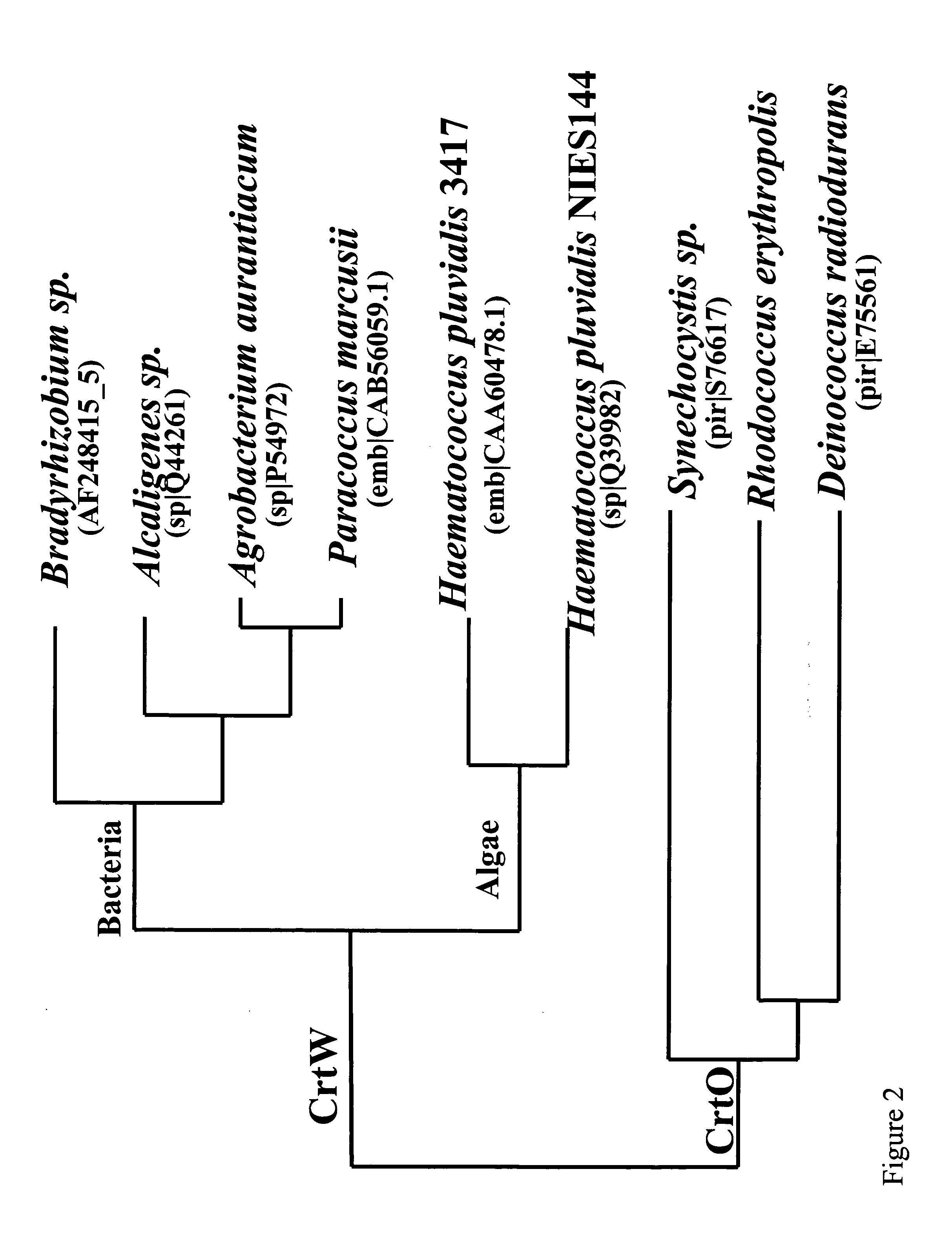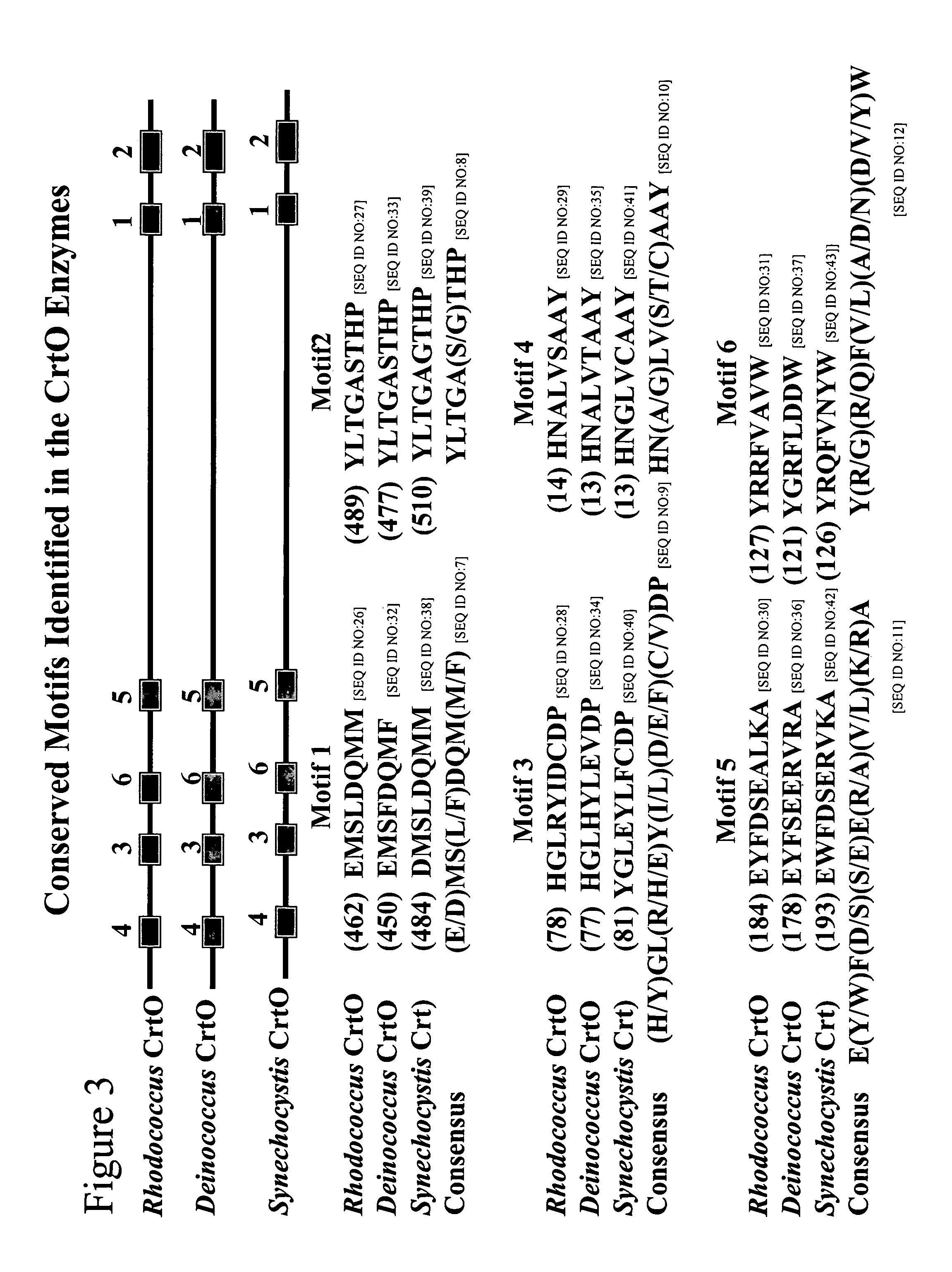Carotenoid ketolase gene
- Summary
- Abstract
- Description
- Claims
- Application Information
AI Technical Summary
Problems solved by technology
Method used
Image
Examples
example 1
Isolation and Characterization of Strain AN12
[0162] Example 1 describes the isolation of strain AN12 of Rhodococcus erythropolis on the basis of being able to grow on aniline as the sole source of carbon and energy. Analysis of a 16S rRNA gene sequence indicated that strain AN12 was related to high G+C Gram positive bacteria belonging to the genus Rhodococcus.
[0163] Bacteria that grew on aniline were isolated from an enrichment culture. The enrichment culture was established by inoculating 1 ml of activated sludge into 10 ml of S12 medium (10 mM ammonium sulfate, 50 mM potassium phosphate buffer (pH 7.0), 2 mM MgCl2, 0.7 mM CaCl2, 50 μM MnCl2, 1 μM FeCl3, 1 μM ZnCl3, 1.72 μM CuSO4, 2.53 AM COCl2, 2.42 μM Na2MoO2, and 0.0001% FeSO4) in a 125 ml screw cap Erlenmeyer flask. The activated sludge was obtained from a wastewater treatment facility. The enrichment culture was supplemented with 100 ppm aniline added directly to the culture medium and was incubated at 25° C. with reciprocal...
example 2
Preparation of Genomic DNA for Sequencing and Sequence Generation
[0166] Genomic DNA preparation. Rhodococcus erythropolis AN12 was grown in 25 mL NBYE medium (0.8% nutrient broth, 0.5% yeast extract, 0.05% Tween 80) till mid-log phase at 37° C. with aeration. Bacterial cells were centrifuged at 4,000 g for 30 min at 4° C. The cell pellet was washed once with 20 ml 50 mM Na2CO3 containingl M KCl (pH 10) and then with 20 ml 50 mM NaOAc (pH 5). The cell pellet was gently resuspended in 5 ml of 50 mM Tris-10 mM EDTA (pH 8) and lysozyme was added to a final concentration of 2 mg / mL. The suspension was incubated at 37° C. for 2 h. Sodium dodecyl sulfate was then added to a final concentration of 1% and proteinase K was added to 100 μg / ml final concentration. The suspension was incubated at 55° C. for 5 h. The suspension became clear and the clear lysate was extracted with equal volume of phenol:chloroform:isoamyl alcohol (25:24:1). After centrifuging at 17,000 g for 20 min, the aqueous p...
example 3
Sequence analysis of the Rhodococcus AN12 CrtO
[0170] Two ORF's were identified in the genomic sequence of Rhodococcus erythropolis AN12 which shared homology to two different phytoene dehydrogenases. One ORF was designated Crtl and had the highest homology (45% identity, 56% similarity) to a putative phytoene dehydrogenase from Streptomyces coelicolor A3(2). The other ORF (originally designated as Crtl2, now as CrtO) had the highest homology (35% identity, 50% similarity; White O. et al Science 286 (5444), 1571-1577 (1999)) to a probable phytoene dehydrogenase DR0093 from Deinococcus radiodurans.
[0171] Crtl and CrtO of AN12 shared very little homology between each other (24% identity and 36% similarity in the 257 amino acid long N terminal half of the molecule which contains the FAD domain; no homology in the C terminal half of the molecule which contains the transmembrane substrate binding domain). CrtO was not a redundant phytoene dehydrogenase since the Crtl mutant with the int...
PUM
| Property | Measurement | Unit |
|---|---|---|
| temperature | aaaaa | aaaaa |
| temperature | aaaaa | aaaaa |
| temperature | aaaaa | aaaaa |
Abstract
Description
Claims
Application Information
 Login to View More
Login to View More - R&D
- Intellectual Property
- Life Sciences
- Materials
- Tech Scout
- Unparalleled Data Quality
- Higher Quality Content
- 60% Fewer Hallucinations
Browse by: Latest US Patents, China's latest patents, Technical Efficacy Thesaurus, Application Domain, Technology Topic, Popular Technical Reports.
© 2025 PatSnap. All rights reserved.Legal|Privacy policy|Modern Slavery Act Transparency Statement|Sitemap|About US| Contact US: help@patsnap.com



